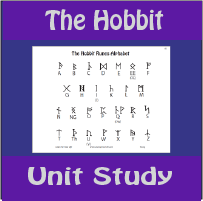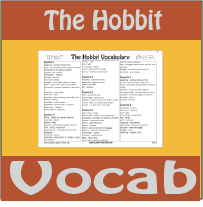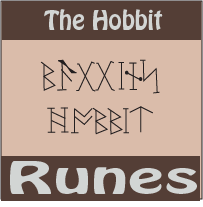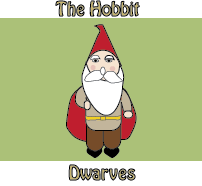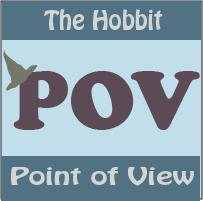The Hobbit Analysis
Uncover the symbols, themes, genres, and points of view with our Hobbit Unit Study.
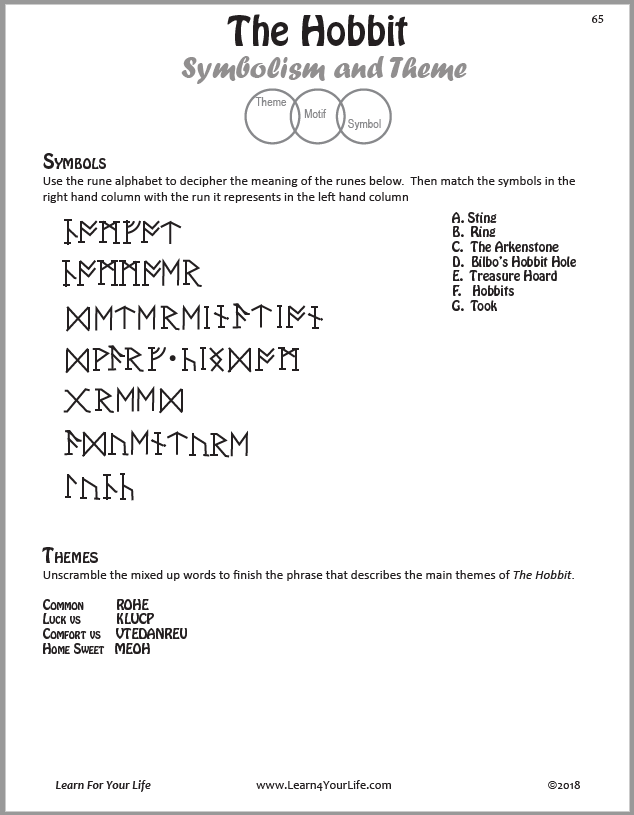
Symbolism In the Hobbit
The Hobbit Unit Study uncovers seven symbols in the narrative. These are discussed in the chapter-by-chapter activities as the symbols appear and reappear.In the worksheet pictured above, students decipher the hobbit runes to find the symbols. Then they match the symbol to what it represents.
The seven symbols (and their answers) are:
- Bilbo's hobbit hole represents comfort.
- The Tooks (or Took blood) represents an adventurous spirit.
- Hobbits represent villagers or the common folk.
- The Ring represents luck (It is noted that it does NOT represent luck in the trilogy that follows.)
- Sting represents determination or a fighting spirit.
- The Arkenstone represents Thorin's rule of the dwarf kingdom.
- The treasure hoard represents greed.
The Hobbit Theme
Four distinct themes in The Hobbit emerge. These are investigated in the unit study as well as the symbols that point to the themes. In the worksheet at the end, the four themes are reviewed. The four themes are:- The common hero
- Comfort vs Adventure
- Luck vs Pluck (or luck vs perserverance)
- Home
The theme of home is broader than Bilbo. The entire quest is to reclaim the stolen home of the dwarves. Enroute, they visit numerous homes (Elrond, Eagles Eyrie, Beorn, Elven Kingdom, Laketown.)
Genres of the Hobbit
Five different genres that The Hobbit encompasses are examined in the unit study. These include:- Fairytale
- Fantasy (a chart differentiating fantasy from fairytale is included)
- Quest literature (students complete a chart with the elements of quest in this story)
- Coming of Age (Recommend a debate whether the middle-age, wealthy hobbit comes of age or not)
- Epic (A change that occurs with the Battle of Five Armies)
Character Development
As stated above, students can debate if this fits the genre of "Coming of Age" literature. But whether one agrees that Bilbo "grows up" or not, character development certainly occurs.Essay question or poster presentations:
- Compare Bilbo and Thorin.
- Describe the changes that take place in Bilbo from the exposition to the denouement.
- Contrast Bilbo, Thorin, and Gandalf as leaders.
Points of View
Yes, it is plural (points of view NOT point of view.)The tone of The Hobbbit might make one think they are reading a simple bedtime story or children's fairytale. But even the point of view in The Hobbit is complex.
It is a third person narrative within an outer frame of a second person narrative.
What Else Is in the Hobbit Unit Study Guide?
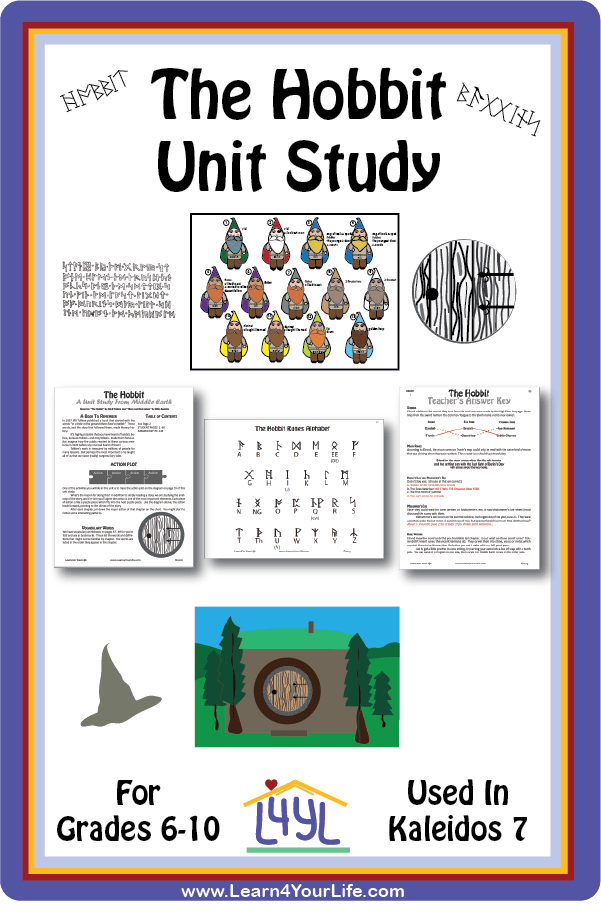
- Multiple Choice, Discussion, and Essay Questions
- Vocabulary Word Lists
- Analysis Symbolism, Themes, Genre
- Middle Earth Runes and worksheets to translate
- Projects and fun activities
Buy The Hobbit Unit Study
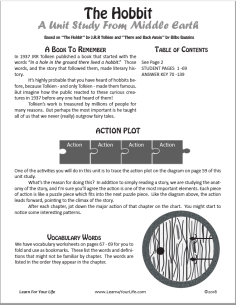
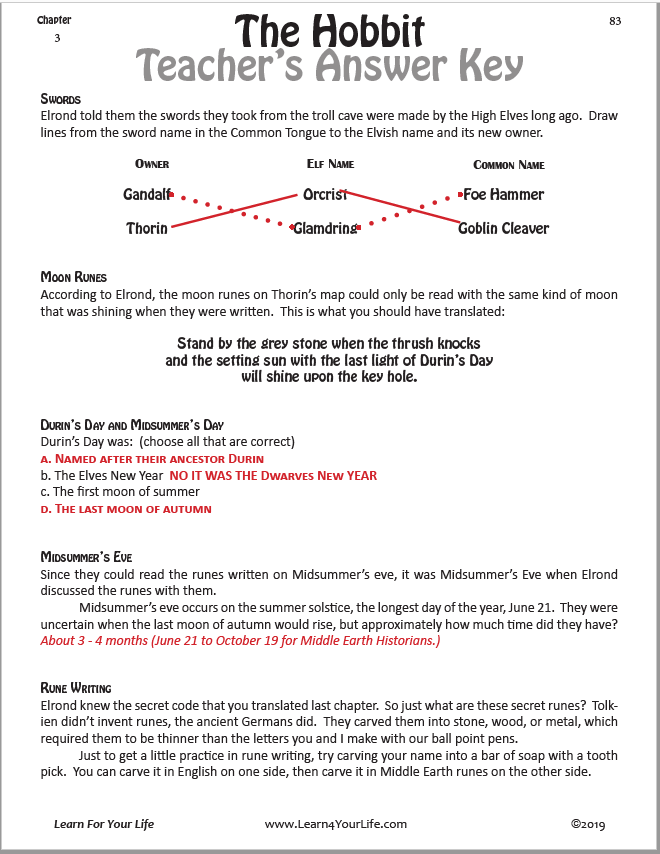
Student Study Guide AND Teacher's Answer Key Included
$2.99 Download - 136 pages
See below for contents of unit study
![]()
The Hobbit Pages
All of our Hobbit pages at a glance

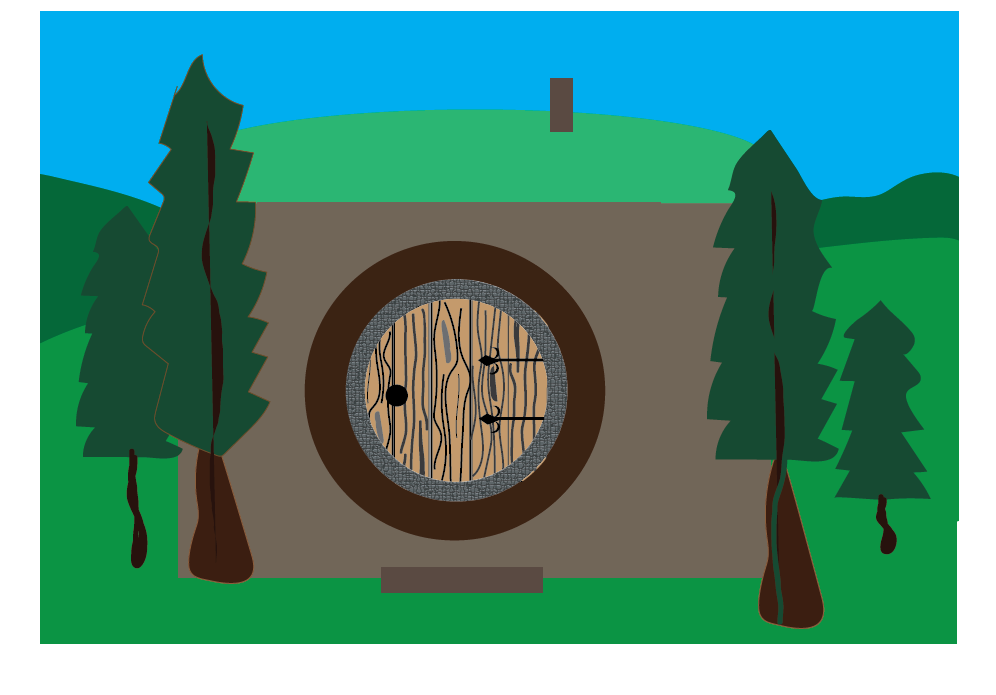

About Our Site
Hands-On Learning



